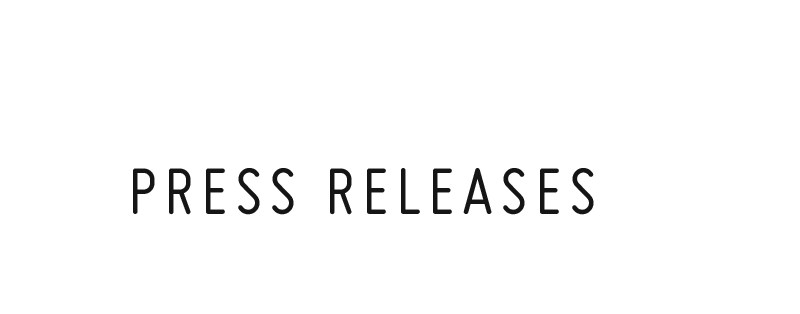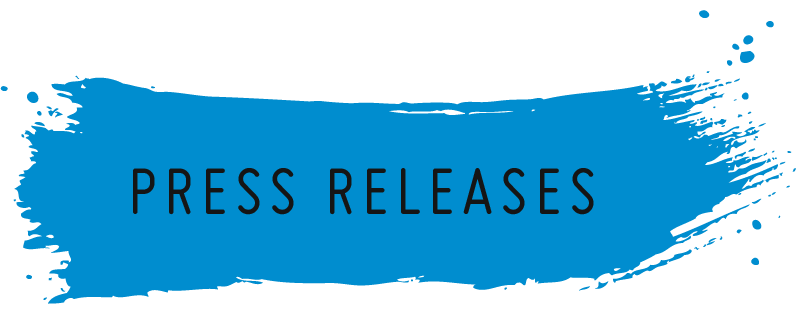- 3D Print Bureau
- 6K
- Agmatix
- Airwayz
- AM-Flow
- Appadda
- Caracol
- CG Trader
- CyberOptics
- e-Xstream
- GenCell
- GreenEye
- Impossible Objects
- Incus Media
- InkBit
- ITG
- JPB Systeme
- KeyProd
- Landa
- LEO Lane
- Lumet
- Magic Software
- MakerBot
- Marketiger
- Nano Dimension
- Paragon Rapid Technologies
- PearlX
- Plant & Bean
- Redefine Meat
- Replique
- Ripples
- Sakuu Corporation
- SolarEdge
- StoreDot
- Stratasys
- Sunrock
- The Bespoke Group
- Trigo
- UltiMaker
- Xjet
STRATASYS ADDITIVE MANUFACTURING SPEEDS UP DEVELOPMENT PROCESS FOR NEW TRAINS AT BOMBARDIER TRANSPORTATION IN GERMAN SPEAKING COUNTRIES
Up to 77 percent time reduction in manufacture of certain EN45545-2 certified rail parts using Stratasys F900 3D Printer
Video of Bombardier Transportation’s 3D printing applications
Minneapolis & Rehovot, Israel, Nov. 19, 2019 – Stratasys (NASDAQ: SSYS) has revealed that, thanks to 3D printing technology, global mobility solutions provider Bombardier Transportation is accelerating part production for interior and exterior vehicle components for its trains in German-speaking countries.
According to Marco Michel, Vice President Operations at Bombardier Transportation, the integration of Stratasys additive manufacturing at the Hennigsdorf-based facility has enabled the company to manufacture certain customized spare parts on-demand via digital inventory at lower cost.
André Bialoscek, Head of Vehicle Physical Integration, Bombardier Transportation Hennigsdorf, sees the installation of an industrial-grade FDM-based Stratasys F900™ 3D Printer as transformational to production of customized parts.
“Our goal during the development process for new trains is to speed up the production of project-specific parts that take a while to design,” says Bialoscek. “While accelerating production, we still need to ensure that total functionality, safety and repeatability are upheld. With our F900 3D Printer, we are able to do all those things – it has been a game-changer for our department. The knowledge gained in this way will then be passed on to our suppliers in case of series production.”
The department recently used the F900 to produce a complex customized air vent system for a battery-powered prototype train – in a fraction of the time compared to external part sourcing.
The large-sized part was 3D printed in Stratasys’ ULTEM™ 9085 resin material, which due to its light weight, significantly reduces the weight per part compared to alternative materials. For interior train components produced at Bombardier Transportation, use of ULTEM™ 9085 resin means optimization of overall material use and weight of the component. Crucially, the material also meets EN45545-2 rail certification guidelines for smoke, toxicity and fire that is a requirement for all train components produced at Bombardier Transportation.
“With regards to the battery train’s air duct, we were able to reduce production time from four months to roughly four weeks,” explains Bialoscek. “That’s a resulting timesaving of nearly 77 percent. That is an incredible outcome for our department and demonstrates our ability to now produce certain parts on-demand to our exacting needs without enduring lengthy production times or compromising on material quality. Also, parts can now be replaced much quicker in the servicing of older trains.”
Bombardier Transportation is now utilizing the F900 to build digital inventory, thereby ensuring that spare part needs are fulfilled on-demand – regardless of the particular train model or its age. By simply storing 3D scans of parts, Bombardier Transportation bypasses physical storage of parts. The F900 enables the team to quickly recreate one of its ‘digital’ parts into a certified train-ready part, leading to fast and direct service for its customers.
“We are now also exploring Stratasys’ PolyJet™ 3D printing technology for our design validation process, and the results we have witnessed so far have been convincing,” Bialoscek comments. “Indeed, in engineering, since using 3D printing for prototyping we have reduced our design process by a massive 30-40%, while also increasing the quality of our overall designs.”
-
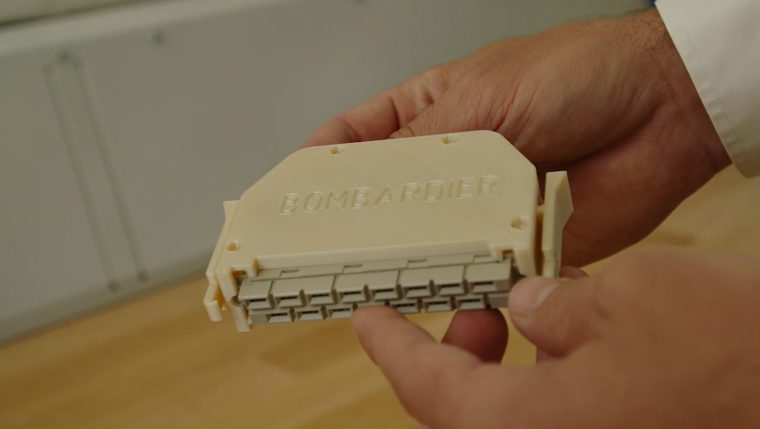 3D printed connector produced using the Stratasys F900
3D printed connector produced using the Stratasys F900
Click here to download 300dpi images -
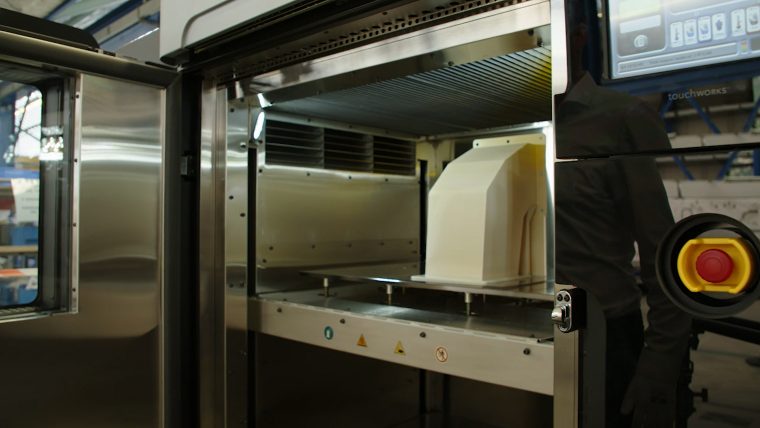 The F900’s print capability enables Bombardier Transportation to rapidly produce larger 3D printed vehicle components, such as this air vent system component
The F900’s print capability enables Bombardier Transportation to rapidly produce larger 3D printed vehicle components, such as this air vent system component
Click here to download 300dpi images -
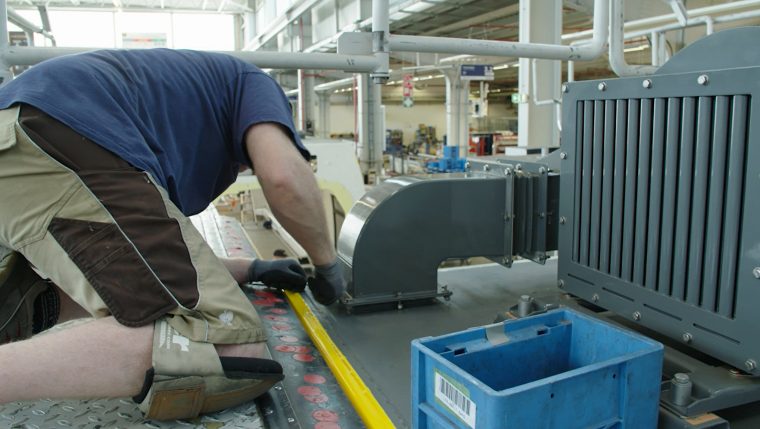 The final customized air vent system – 3D printed in ULTEM™ 9085 resin
The final customized air vent system – 3D printed in ULTEM™ 9085 resin
Click here to download 300dpi images
LA FABRICATION ADDITIVE DE STRATASYS ACCÉLÈRE LE PROCESSUS DE DÉVELOPPEMENT DE NOUVEAUX TRAINS CHEZ BOMBARDIER TRANSPORT DANS LES PAYS GERMANOPHONES
Jusqu’à 77 % de gain de temps dans la fabrication de certaines pièces ferroviaires certifiées EN45545-2 avec l’imprimante 3D F900 de Stratasys
Vidéo des applications d’impression 3D de Bombardier Transport
Minneapolis & Rehovot, Israël, 19 novembre 2019 – Stratasys (NASDAQ: SSYS) a annoncé que, grâce à la technologie d’impression 3D, le fournisseur mondial de solutions de mobilité, Bombardier Transport, accélère la production de pièces pour les composants internes et externes des voitures de ses trains dans les pays germanophones.
Selon Marco Michel, vice-président de l’exploitation chez Bombardier Transport, l’adoption de la fabrication additive de Stratasys dans l’usine de Hennigsdorf a permis à l’entreprise de fabriquer certaines pièces de rechange personnalisées à la demande, grâce à un inventaire numérique à moindre coût.
Pour André Bialoscek, chef de l’intégration physique des voitures, Bombardier Transport Hennigsdorf, l’installation d’une imprimante 3D F900™ de Stratasys de qualité industrielle, avec la technologie FDM, constitue un changement décisif pour la production de pièces sur mesure.
Il déclare : « Notre objectif pendant le processus de développement de nouveaux trains est d’accélérer la production de pièces spécifiques à un projet et dont la conception prend un certain temps ». « Tout en accélérant la production, nous devons veiller à maintenir la fonctionnalité, la sécurité et la répétabilité totales. Notre imprimante 3D F900 nous permet d’y parvenir, et elle a bouleversé le fonctionnement de notre département. Les connaissances ainsi acquises seront ensuite transmises à nos fournisseurs en cas de production en série. »
Le département a récemment utilisé la F900 pour produire un système complexe de ventilation personnalisé pour un prototype de train alimenté par batterie, le tout en une fraction du temps qu’il aurait fallu en cas d’approvisionnement externe.
La pièce de grande taille a été imprimée en 3D avec la résine ULTEM™ 9085 de Stratasys, dont la légèreté permet de réduire considérablement le poids par pièce par rapport aux autres matériaux. Pour les composants intérieurs des trains produits chez Bombardier Transport, l’utilisation de la résine ULTEM™ 9085 permet d’optimiser l’utilisation globale du matériau et le poids du composant. De plus, et c’est essentiel, ce matériau est conforme aux directives de certification de la norme EN45545-2 pour la fumée, la toxicité et l’incendie, ce qui est une exigence pour tous les composants de trains produits chez Bombardier Transport.
« En ce qui concerne le conduit d’air du train alimenté par batterie, nous avons pu ramener le temps de production de quatre mois à environ quatre semaines », nous explique M. Bialoscek. « Cela représente un gain de temps de près de 77 %. C’est vraiment révolutionnaire pour notre département, et cela démontre notre capacité à produire certaines pièces à la demande selon nos exigences, sans affronter de longs délais de production et sans compromis sur la qualité des matériaux. De plus, les pièces peuvent maintenant être remplacées beaucoup plus rapidement lors de l’entretien des trains plus anciens. »
Bombardier Transport utilise désormais la F900 pour constituer un stock numérique et ainsi s’assurer que les besoins en pièces de rechange sont comblés à la demande, quel que soit le modèle de train ou son âge. En stockant simplement des numérisations 3D de pièces, Bombardier Transport évite leur stockage physique. La F900 permet à l’équipe de transformer rapidement l’une de ces pièces « numériques » en pièce certifiée et ajustée au ferroviaire , ce qui se traduit par un service rapide et direct pour ses clients.
Selon M. Bialoscek, « nous explorons maintenant la technologie d’impression 3D PolyJet™ de Stratasys pour notre processus de validation de la conception, et les résultats obtenus jusqu’à présent ont été convaincants ». « En effet, en ingénierie, depuis que nous utilisons l’impression 3D pour le prototypage, nous avons réduit notre processus de conception de 30 à 40 %, tout en augmentant la qualité de l’ensemble de nos conceptions. »
-
 Connecteur imprimé en 3D réalisé avec la F900 de Stratasys
Connecteur imprimé en 3D réalisé avec la F900 de Stratasys
Click here to download 300dpi images -
 La capacité d'impression de la F900 permet à Bombardier Transportation de produire rapidement de plus gros composants imprimés en 3D pour les voitures, comme ce composant du système de ventilation.
La capacité d'impression de la F900 permet à Bombardier Transportation de produire rapidement de plus gros composants imprimés en 3D pour les voitures, comme ce composant du système de ventilation.
Click here to download 300dpi images -
 Le système de ventilation personnalisé final imprimé 3D avec la résine ULTEM™ 9085
Le système de ventilation personnalisé final imprimé 3D avec la résine ULTEM™ 9085
Click here to download 300dpi images
STRATASYS ADDITIVE FERTIGUNG BESCHLEUNIGT DEN ENTWICKLUNGSPROZESS FÜR NEUE ZÜGE BEI BOMBARDIER TRANSPORTATION IN DER DACH-REGION
Eine Zeiteinsparung von bis zu 77 % in der Fertigung von bestimmten EN45545-2 zertifizierten Bauteilen mit dem Stratasys F900™ 3D Drucker
Video der 3D-gedruckten Anwendungen bei Bombardier Transportation
Minneapolis & Rehovot, Israel, 19. November 2019 –Stratasys (NASDAQ: SSYS) gab heute bekannt, dass der weltweit tätige Mobilitätslösungsanbieter Bombardier Transportation dank 3D-Drucktechnologie die Teileproduktion in der DACH-Region für Fahrzeuginnen- und -außenteile beschleunigen kann.
Laut Marco Michel, Vice President Operations bei Bombardier Transportation, konnte durch die Integration der additiven Fertigung von Stratasys am Standort Hennigsdorf erreicht werden, dass das Unternehmen bestimmte kundenspezifische Ersatzteile On-Demand und teils auch kostengünstiger über digitale Bestände selbst herstellen kann.
André Bialoscek, Head of Vehicle Physical Integration bei Bombardier Transportation Hennigsdorf, sieht in der Integration der additiven Fertigung in Form des F900™ von Stratasys am Standort eine grundlegende Veränderung, besonders in Bezug auf die benötigte Vielzahl von individuellen Montagebauteilen.
„Bei der Prototypenkonstruktion von Fahrzeugen haben wir das Ziel, die Produktion zu beschleunigen. Dies betrifft insbesondere projektspezifische Bauteile, deren Konstruktion einige Zeit in Anspruch nimmt “, so Bialoscek. „Dabei muss die Funktionalität, Sicherheit und Reproduzierbarkeit auch bei schnellerer Produktion insgesamt weiter gewährleistet sein. Mit unserem 3D-Drucker F900 ist all dies möglich – für unsere Abteilung ist dies ein bahnbrechender Wandel. Die so gewonnenen Erkenntnisse werden dann im Falle einer Serienproduktion an unsere Lieferanten weitergegeben.”
Jüngst fertigte die Abteilung mit der F900 eine komplexe, maßgeschneiderte Belüftungsanlage für einen batteriebetriebenen Zugprototypen – in einem Bruchteil der Zeit verglichen mit externer Beschaffung.
Dieses große Bauteil wurde per 3D-Druck aus dem Material ULTEM™ 9085 Resin gefertigt. Das leichte Material verringert das Gewicht pro Bauteil im Vergleich zu anderen Materialien erheblich. Durch Einsatz des ULTEM™ 9085 Resin kann sowohl der gesamte Materialeinsatz als auch das Gewicht der fertigen Bauteile für die Innenausstattung von Bahnfahrzeugen bei Bombardier Transportation optimiert werden.
ULTEM™ 9085 Resin erfüllt vor allem auch die Brandschutzrichtlinien der Bahnzertifizierung EN45545-2. Dies ist eine Grundvoraussetzung für alle Zugbauteile, die bei Bombardier Transportation gefertigt werden.
„Beim Luftkanal des batteriebetriebenen Zugs konnten wir die Produktionszeit von vier Monaten auf etwa vier Wochen reduzieren”, erläutert Bialoscek. „Dies entspricht einer Zeiteinsparung von nahezu 77 Prozent. Für unsere Abteilung ist dies ein überwältigendes Ergebnis. Es zeigt, dass wir ab sofort bestimmte Bauteile auf Abruf nach unseren hohen Anforderungen produzieren können, ohne lange Produktionszeiten oder Kompromisse bei der Materialqualität einzugehen. Und auch bei der Wartung älterer Züge können Bauteile schneller reproduziert werden.”
Bombardier Transportation verwendet die F900 nun für den Aufbau einer digitalen Inventarisierung. Dies sichert den Ersatzteilbedarf der Kunden – unabhängig vom Zugmodell oder dessen Alter. Durch die Speicherung von 3D-Scans der Produkte und Bauteile kann Bombardier Transportation die Lagerung physischer Ersatzteile umgehen. Die F900 bietet dem Team die Möglichkeit, eines seiner “digitalen” Bauteile schnell in ein zertifiziertes, einsatzfähiges Bauteil zu verwandeln.
„Inzwischen erproben wir auch die PolyJet™-Technologie von Stratasys für unseren Designvalidierungsprozess und konnten bisher überzeugende Ergebnisse erzielen“, so Bialoscek. „Der Einsatz von 3D-Druck zur Fertigung von Prototypen hat dazu geführt, dass wir unseren Designprozess um 30-40% reduziert und gleichzeitig die Gesamtqualität unserer Designs erhöht haben.”
-
 3D-gedruckter Stecker, hergestellt auf der Stratasys F900.
3D-gedruckter Stecker, hergestellt auf der Stratasys F900.
Click here to download 300dpi images -
 Die große Druckkapazität der F900 ermöglicht es Bombardier Transportation, größere 3D-Druckkomponenten für Fahrzeuge zu produzieren, wie beispielsweise diesen Lüftungsschacht.
Die große Druckkapazität der F900 ermöglicht es Bombardier Transportation, größere 3D-Druckkomponenten für Fahrzeuge zu produzieren, wie beispielsweise diesen Lüftungsschacht.
Click here to download 300dpi images -
 Finaler Lüftungsschacht - 3D gedruckt in ULTEM™ 9085 Resin.
Finaler Lüftungsschacht - 3D gedruckt in ULTEM™ 9085 Resin.
Click here to download 300dpi images
LA FABBRICAZIONE ADDITIVA DI STRATASYS ACCELERA IL PROCESSO DI SVILUPPO DEI NUOVI TRENI DI BOMBARDIER TRANSPORTATION NEI PAESI DI LINGUA TEDESCA
Fino al 77% di riduzione dei tempi di produzione di determinati componenti ferroviari certificati EN45545-2 con la stampante 3D F900 di Stratasys
Il video delle applicazioni di stampa 3D di Bombardier Transportation
Minneapolis e Rehovot, Israele, 19 novembre 2019 – Stratasys (NASDAQ: SSYS) ha rivelato che, grazie alla tecnologia di stampa 3D, il fornitore globale di soluzioni di mobilità Bombardier Transportation sta accelerando la produzione di componenti interni ed esterni per i suoi treni nei paesi di lingua tedesca.
Secondo Marco Michel, vicepresidente operativo della Bombardier Transportation, l’integrazione della fabbricazione additiva di Stratasys presso lo stabilimento di Hennigsdorf ha permesso all’azienda di produrre pezzi di ricambio personalizzati on-demand attraverso un inventario digitale a costi inferiori.
André Bialoscek, responsabile della Vehicle Physical Integration, presso lo stabilimento Bombardier Transportation di Hennigsdorf, considera l’installazione della stampante industriale 3D F900™ di Stratasys, con tecnologia FDM, un fattore di trasformazione per la produzione di parti personalizzate.
“Il nostro obiettivo durante il processo di sviluppo dei nuovi treni è quello di accelerare la fabbricazione di parti specifiche la cui progettazione richiede un certo periodo di tempo”, afferma Bialoscek. “Tuttavia, pur velocizzando la produzione, dobbiamo sempre garantire totale funzionalità, sicurezza e ripetibilità. Con la stampante 3D F900, siamo in grado di fare tutto questo: ha rappresentato una svolta per il nostro reparto. Le conoscenze acquisite in questo modo saranno poi condivise con i nostri fornitori in caso di produzione in serie”.
Di recente, il reparto ha utilizzato la F900 per produrre un complesso sistema di ventilazione personalizzato per un prototipo di treno a batteria, in un periodo di tempo sensibilmente inferiore rispetto all’esternalizzazione del componente.
Questo pezzo di grandi dimensioni è stato stampato in 3D con la resina ULTEM™ 9085 di Stratasys che, grazie alla sua leggerezza, ne ha ridotto significativamente il peso rispetto all’uso di materiali alternativi. Per i componenti interni dei treni prodotti dalla Bombardier Transportation, l’impiego della resina ULTEM™ 9085 significa ottimizzazione dell’uso complessivo del materiale e del peso del componente. Uno degli aspetti di fondamentale importanza è che il materiale soddisfa i requisiti di fiamma, fumo e tossicità delle linee guida per la certificazione ferroviaria EN45545-2, obbligatoria per tutti i componenti dei treni prodotti dalla Bombardier Transportation.
“Per quanto riguarda il condotto dell’aria della batteria del treno, siamo riusciti a ridurre i tempi di produzione da quattro mesi a circa quattro settimane”, spiega Bialoscek. “Il che significa un risparmio di tempo di quasi il 77%. Questo è un risultato incredibile per il nostro reparto e dimostra che adesso siamo in grado di produrre alcuni pezzi su richiesta in base alle nostre esigenze, senza dover sostenere lunghi tempi di produzione o compromettere la qualità del materiale. Inoltre, ora possiamo rifornirci molto più velocemente di pezzi di ricambio per la manutenzione dei treni più vecchi”.
La Bombardier Transportation adesso sta utilizzando la F900 per creare un catalogo digitale in modo da assicurare una fornitura on demand dei pezzi di ricambio necessari, indipendentemente dal modello di treno o dall’anno di produzione. Semplicemente memorizzando la scansione in 3D di ogni parte, la Bombardier Transportation è in grado di prescindere dallo stoccaggio fisico dei pezzi. La F900 consente al team di riprodurre rapidamente ognuna delle parti ‘digitalizzate’, stampando un componente certificato pronto per essere utilizzato sul treno e offrendo così ai propri clienti un servizio veloce e diretto.
“Stiamo anche esplorando la tecnologia di stampa 3D PolyJet™ di Stratasys per il processo di convalida dei progetti e i risultati ottenuti finora sono stati convincenti”, osserva Bialoscek. “Infatti, da quando abbiamo implementato l’utilizzo della stampa 3D per la prototipazione, abbiamo ridotto il processo di progettazione di un buon 30-40%, aumentando anche la qualità complessiva dei nostri progetti”.
-
 Connettori stampati in 3D prodotti usando la Stratasys F900
Connettori stampati in 3D prodotti usando la Stratasys F900
Click here to download 300dpi images -
 La capacità produttiva della F900 consente alla Bombardier Transportation di stampare rapidamente in 3D componenti di grandi dimensioni per veicoli, come questa parte del sistema di ventilazione.
La capacità produttiva della F900 consente alla Bombardier Transportation di stampare rapidamente in 3D componenti di grandi dimensioni per veicoli, come questa parte del sistema di ventilazione.
Click here to download 300dpi images -
 Versione finale del sistema di ventilazione personalizzato stampato in 3D con la resina ULTEM™ 9085
Versione finale del sistema di ventilazione personalizzato stampato in 3D con la resina ULTEM™ 9085
Click here to download 300dpi images
LA FABRICACIÓN ADITIVA DE STRATASYS ACELERA EL PROCESO DE DESARROLLO DE NUEVOS TRENES EN BOMBARDIER TRANSPORTATION EN LOS PAÍSES DE HABLA ALEMANA
Se ha reducido hasta un 77 por ciento el tiempo necesario para la fabricación de ciertas piezas del sector ferroviario con certificación EN45545-2 mediante la impresora 3D F900 de Stratasys
Video de las aplicaciones de impresión 3D de Bombardier Transportation
Minneapolis y Rehovot, Israel, 19 de noviembre de 2019 – Stratasys (NASDAQ: SSYS) ha comunicado que, gracias a la tecnología de impresión 3D, el proveedor mundial de soluciones de movilidad Bombardier Transportation está acelerando la producción de piezas destinadas a los componentes internos y externos de sus trenes en los países de habla alemana.
Según Marco Michel, vicepresidente de operaciones de Bombardier Transportation, la integración de la fabricación aditiva de Stratasys en las instalaciones de Hennigsdorf ha permitido a la empresa fabricar ciertas piezas de repuesto personalizadas a petición mediante un inventario digital con un coste inferior.
André Bialoscek, responsable de la integración física de vehículos de Bombardier Transportation Hennigsdorf, considera la instalación de una impresora industrial 3D F900™ de Stratasys con tecnología FDM como un factor de transformación para la producción de piezas personalizadas.
«Nuestro objetivo durante el proceso de desarrollo de nuevos trenes es acelerar la producción de las piezas específicas del proyecto cuyo diseño requiere un cierto tiempo», afirma Bialoscek. «A la vez que aceleramos la producción, tenemos que asegurarnos de que se mantiene una total funcionalidad, seguridad y repetibilidad. Con nuestra impresora 3D F900, podemos hacer todo eso, lo que ha constituido toda una revolución para nuestro departamento. Los conocimientos así adquiridos se transmitirán a nuestros proveedores en caso de producción en serie».
El departamento ha utilizado recientemente la F900 para fabricar un complejo sistema personalizado de ventilación para un tren prototipo alimentado por baterías, en mucho menos tiempo que el necesario en caso de aprovisionamiento externo de piezas.
La pieza de gran tamaño se imprimió en 3D en el material de resina ULTEM™ 9085 de Stratasys que, debido a su peso ligero, reduce considerablemente el peso por pieza en comparación con otros materiales alternativos. Para los componentes internos producidos en Bombardier Transportation, con la resina ULTEM™ 9085 se optimiza el uso general del material y el peso del componente. También es fundamental que el material cumple con las directrices de certificación ferroviaria EN45545-2 en cuanto a emisiones de humo, toxicidad e ignición, que es un requisito para todos los componentes de tren producidos en Bombardier Transportation.
«Con respecto al conducto de ventilación del tren que funciona con baterías, pudimos reducir el tiempo de producción de cuatro meses a aproximadamente cuatro semanas», explica Bialoscek. «Esto supone un ahorro de tiempo de casi el 77 por ciento. Es un resultado increíble para el departamento y demuestra nuestra capacidad de producir ahora determinadas piezas a petición de acuerdo con nuestras necesidades exactas sin tener que esperar largos tiempos de producción ni sacrificar la calidad del material. Además, ahora es mucho más rápido sustituir las piezas durante el mantenimiento de trenes más viejos».
Bombardier Transportation utiliza ahora la F900 para crear un inventario digital y garantizar así que las necesidades de piezas de repuesto se satisfacen de inmediato, independientemente del modelo de tren o de su antigüedad. Con solo almacenar los escaneados 3D de las piezas, Bombardier Transportation evita el almacenamiento físico de las mismas. La F900 permite al equipo recrear rápidamente una de sus piezas «digitales» en una pieza certificada lista para el tren, lo que se traduce en un servicio rápido y directo a sus clientes.
«Ahora también estamos analizando la tecnología de impresión 3D PolyJet™ de Stratasys para nuestro proceso de validación de diseño y los resultados que hemos obtenido hasta ahora han sido convincentes», comenta Bialoscek. «De hecho, en ingeniería, desde que utilizamos la impresión 3D para el prototipado, hemos reducido nuestro proceso de diseño en un significativo 30-40 %, a la vez que aumentamos la calidad de nuestros diseños en general».
-
 Conector impreso en 3D fabricado con la F900 de Stratasys
Conector impreso en 3D fabricado con la F900 de Stratasys
Click here to download 300dpi images -
 La capacidad de impresión de la F900 permite a Bombardier Transportation fabricar rápidamente componentes de vehículos impresos en 3D de mayor tamaño, como este componente del sistema de ventilación
La capacidad de impresión de la F900 permite a Bombardier Transportation fabricar rápidamente componentes de vehículos impresos en 3D de mayor tamaño, como este componente del sistema de ventilación
Click here to download 300dpi images -
 Sistema de ventilación final personalizado e impreso en 3D en resina ULTEM™ 9085
Sistema de ventilación final personalizado e impreso en 3D en resina ULTEM™ 9085
Click here to download 300dpi images
